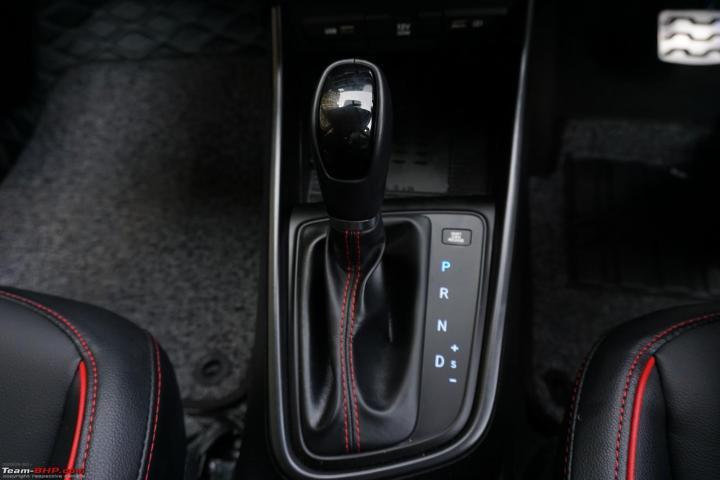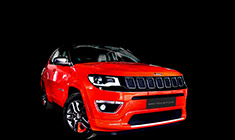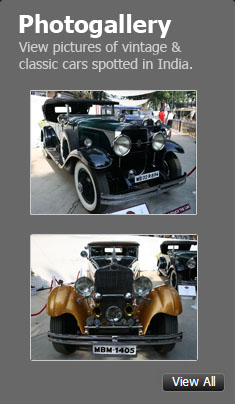News
DCT improved in 3 years? Comparing my 2021 i20 N-Line with 2024 Seltos
Here are also some tips to keep your DCT healthy.
BHPian Sidchh recently shared this with other enthusiasts.
The History
The Dual Clutch Transmission is considered the holy grail of automatic transmissions, one of the best for enthusiasts. In fact, it is the only automatic that even manual enthusiasts (at least some of them) admire and wouldn't mind driving.
The car market, and any market for that matter functions in a trickle-down fashion. New technology comes out and for a brief period, only the wealthy (and maybe those using it for a purpose, such as SatNav for defence) can use it. Later on, somebody finds a way to mass produce it for cheaper and profit off of it. Then it comes to the middle class and becomes accessible. Similar is the story of dual-clutch gearboxes in the Indian market. As far as my research goes (please don't hold this against me, I am not sure if this is correct), the first car rocking a dual-clutch transmission that launched in India was the Volkswagen Polo back in 2013 with the 1.2 TSI (feel free to correct me in the comments, I am genuinely interested in knowing). That, however, was a disaster and ended up ruining the image of the DCT for the Indian market. So much so, that the DCT in the Polo was later replaced with the ol’ reliable torque converter. The transmission, tuned for friendly and smooth European traffic was absolutely tortured in the stop-go erratic traffic here in urban India. The transmission kept overheating and failing and proved to be a pain to maintain, at least for the non-enthusiast.
Unlike torque converters which can take abuse for breakfast, lunch and dinner, and still keep going, the DCT requires care, something that the average Indian consumer just cannot give, or does not have the time to give. Later on, the DCT was better tuned for Indian conditions, but till then, the reputation was already destroyed and people started steering clear of these gearboxes. Even now, some people are scared of owning a DCT, and I get questions all the time about whether mine has overheated, or given me any trouble (it has not).
The Commonisation of The DCTs
Hyundai introduced the DCT with its Venue mated to the 1.0 TGDi, their 3-cylinder engine for the practical enthusiast on a budget. Hyundai cars sell like hotcakes, and let’s be real, the service advisors mis-sell a lot as well, all of this made the DCT a popular gearbox in India. The DCT started selling in May 2019 and became quite common after that. Many Hyundai cars entered the market with a dual-clutch (the Germans also were selling DSGs in the Jetta, Polo, Tiguan, Kodiaq etc). There was the Verna 1.0 turbo, the Venue continued to sell, the 2nd gen Creta got a DCT and then came the i20 turbo. Kia also launched all its cars minus the Carnival with a DCT as an option. Morris Garages ALSO entered the Indian market with a DCT in their Hector. And let us not forget Jeep with their 1.4 Turbo with a DCT. Phew! So many DCTS! The Evolution (and Aging) of the DCT
I have had the fortune of owning and dailying a DCT for the past two years and 45,000 kilometres in the i20 N Line. We have also just recently purchased another Hyundai-Kia car with a dual-clutch, the FL Seltos X Line 1.5 DCT. Other than that, I have driven a couple of other cars with a DCT in them, that includes Koreans and Germans. And so, I would love to point out the shortcomings of the 2021 DCT, and how those have been addressed as of 2024.
Let us talk about the one I have daily for the past 2 years. This was back when the DCT was relatively new to the Indian market, but this was after Hyundai had polished all the issues people were facing in the initial days of the Seltos with their gearboxes being rendered undrivable due to overheating. The DCT back then, was still a gearbox people warned me of. In 2021 however, I felt the product had matured enough, 8 years after being introduced, and plenty of failures later, to be worth a shot. And boy was I right. Not once has the dual-clutch failed me, and it is a pleasure to drive. All of the people who have driven my car (yes, all!) fail to recognise when it shifts, except in erratic traffic. It is super fast with downshifts (when initiated using the throttle or the paddles), but when upshifting, the paddles can be a bit moody and delay the shift.
I could just be wrong, or it could just be the other way around, but as far as I have observed, the gearbox has learnt how I drive. Now, as I said earlier, it could just be that I have learnt how it operates, but I have noticed that if you’re driving enthusiastically and come to a stop (usually for a red light) the gearbox holds gears after you get going for a good second or two. It assumes that you’re going to start hooning again and makes that easier for you, and less taxing for the gearbox. Overall, in no way is the DCT on the 2021 i20 N Line unreliable, or tedious to live with. It has never failed or caused any problem in its 45,000 kilometres of service and shows no signs of failure either. Admittedly, I have pampered the gearbox as much I could, the things I have done to maintain gearbox health, I will be sharing in the end.
The Comparison
I have had a frame of reference for the past two years, and so everything that has formed my opinion on the Seltos’ gearbox stems from my experience with the N Line. I have driven the Seltos 2000 kilometres in the last month so, I have a pretty good idea of how it operates.
So, talking about the DCT of the Kia, it feels much more refined and shifts comparatively smoother, but still manages to be sportier somehow. The DCT in the Kia feels like it wants you to go fast, especially in sports mode, but it also doesn’t mind if you want to drive sober. One major difference is that it lets you brake boost. While the difference isn’t drastic, the launch feels much more eager, which is ironic, considering the N Line is meant to be the sportier of the two. The N Line just does not launch, but the Kia feels like it wants to, and launches quite well too. Keep in mind, I have also driven the pre-FL Seltos Turbo DCT and that was tuned quite similar to my N Line, so I’m guessing they were just being conservative back then to improve longevity.
Other than that, the Kia solves one very prominent oversight I felt existed in the N Line. It would simply not let your engine brake, which is an essential part of driving in urban cities here in India. It helps greatly reduce brake usage and driver fatigue. The DCT in the Seltos however, lets your engine brake in the second gear, which is the gear it stays in stop-go traffic. Other than that, it polishes the jerks that DCTs are well known for (not that they were bad in the N Line, they’re just better here) and is overall a better, more evolved version of the same box. Luckily, it retains the fun of the initial DCT, downshifts quickly and is happy to take a trip to the top of the rev range. It is a great gearbox for the highway as well as the city. Out on the open highways, it is quick to respond to throttle input and drop a gear to deal with the turbo lag.
The Care
There are only a few things you need to keep in mind when driving a DCT to keep it healthy, and they might seem difficult to execute written down, but trust me, they become habits quite easily:
- Put it in Neutral on red lights longer than 10 seconds
- Don’t surprise it! Going fast? Use the paddles, or ease the throttle in. Don’t tap the brakes repeatedly or harshly and then release.
- Avoid driving using your brake (especially on an incline)
- DO NOT rev up in N and then dump to D in an attempt to launch the vehicle
- When parking the car, ALWAYS put it in N first, then parking brake, and then P
- NEVER leave it in Park on an incline without the parking brake engaged (true for all AT)
The Verdict
Like all technology, the DCT keeps evolving and becoming better. Even back then, and right now, I would not hesitate in recommending someone to buy a DCT. In fact, now that Hyundai Kia has addressed the few issues it had, I would recommend it even more enthusiastically.
Here's what GTO had to say on the matter:
Great thread! Yes, manufacturers continuously improve their engines, transmissions & suspensions. Especially proactive ones like Hyundai & Kia.
That being said, do keep in mind that larger engines make things easier for ATs, due to their superior power, torque & better spread (of power). Countless times, I have driven the same AT with different engines, and the AT was always better behaved in the larger engined car.
Here's what BHPian Knightrider had to say on the matter:
Yes, it really seems to have changed, and for good.
After reading a lot of horror stories of DCT & DSG in the past, we hesitantly went ahead with Kia Carens DCT in 2022. To date, haven't faced a single issue. Touchwood.
Yes, I do follow most of the care points mentioned above. But that's it. Enjoying the smooth DCT!
Here's what BHPian swami69 had to say on the matter:
I too own a Kia Carens DCT. Not sure what was improved from earlier, but, I enjoy driving this car. We just need to learn to manipulate the throttle inputs in the initial gears, then it is extremely smooth shifting. You won't know it reaching 7th gear with such a low RPM. The car also returns very good fuel efficiency if we keep it below 100 @ around 16 km/l. Yes, as mentioned above, take those simple precautions mentioned to keep the transmission healthy.
Check out BHPian comments for more insights and information.



















